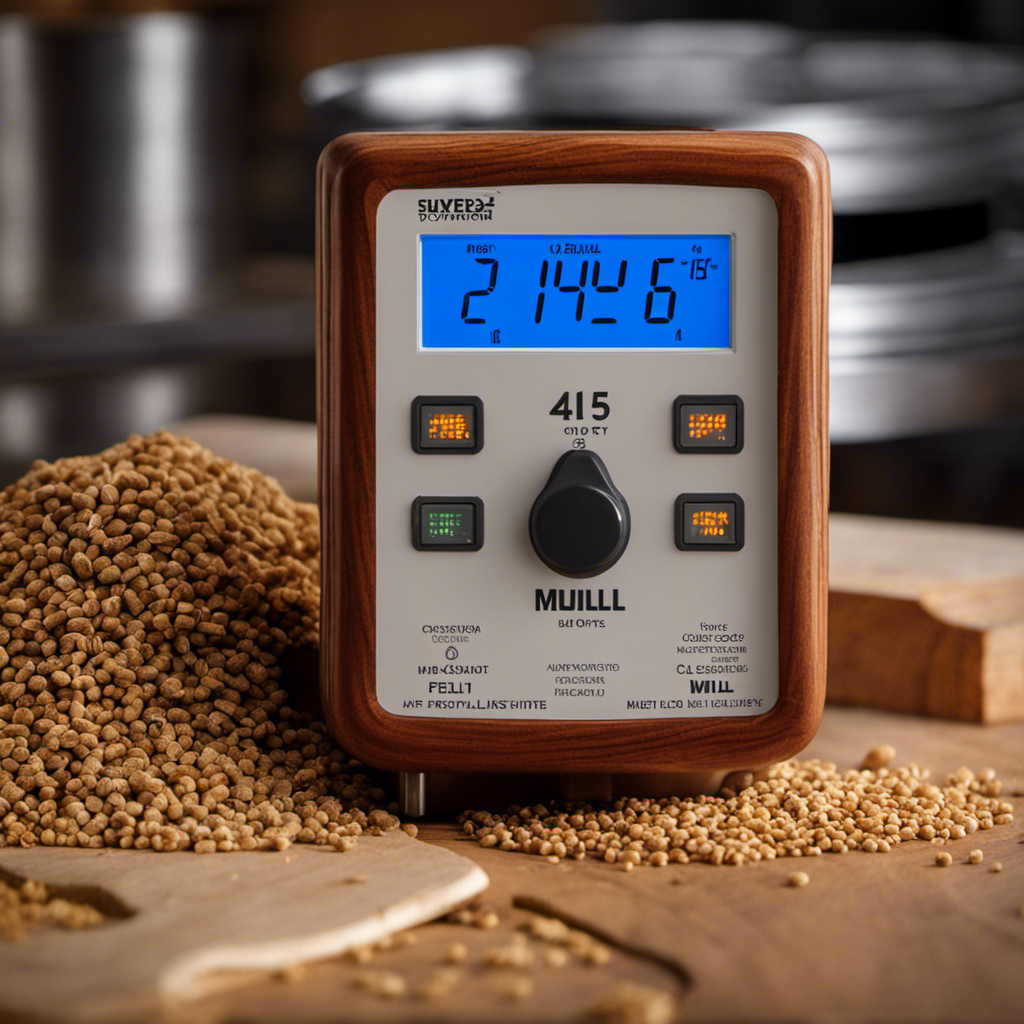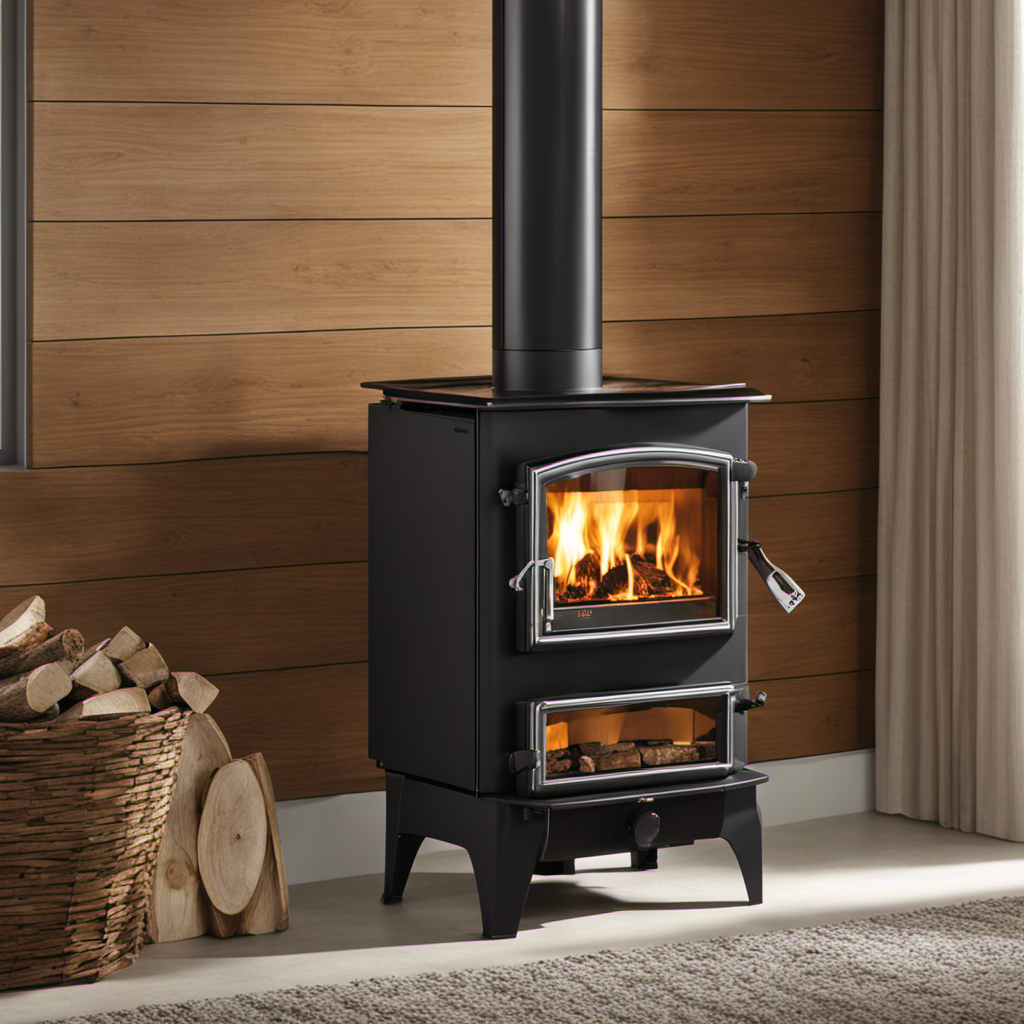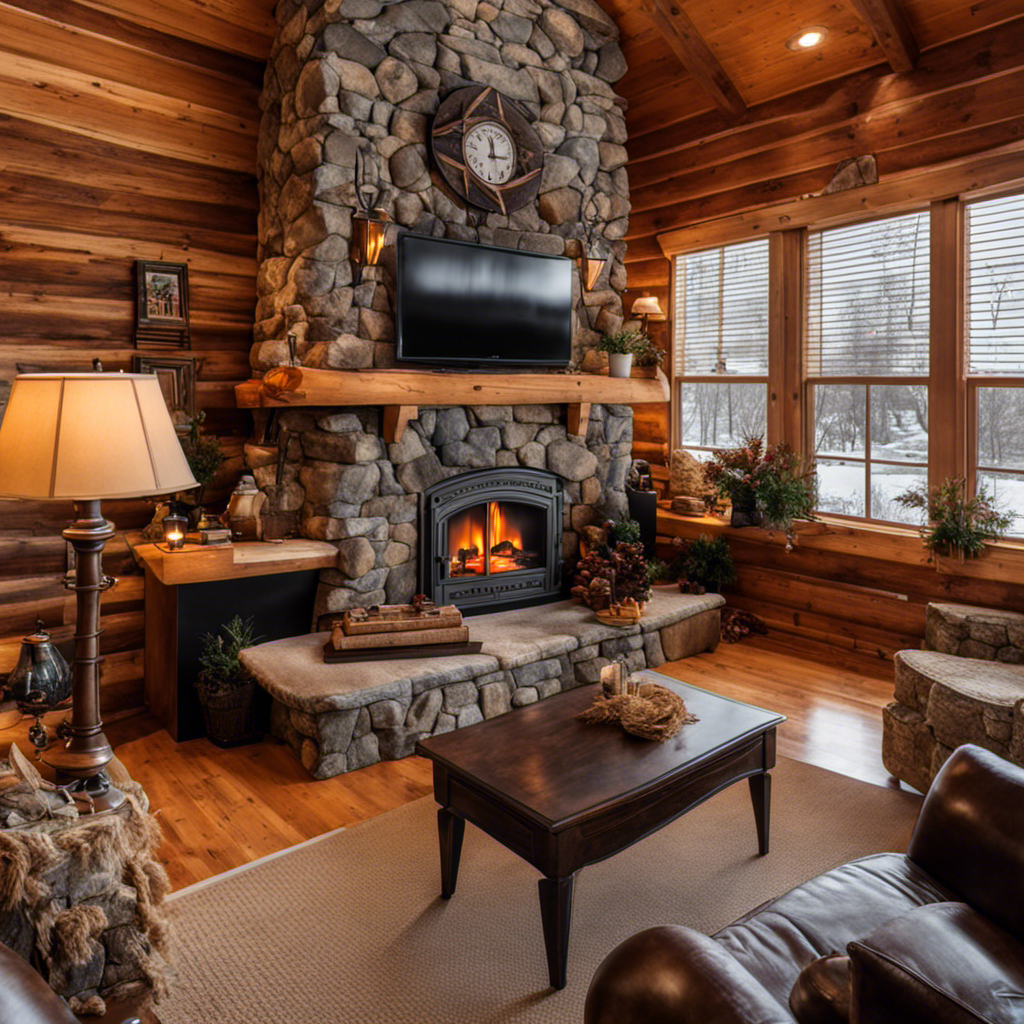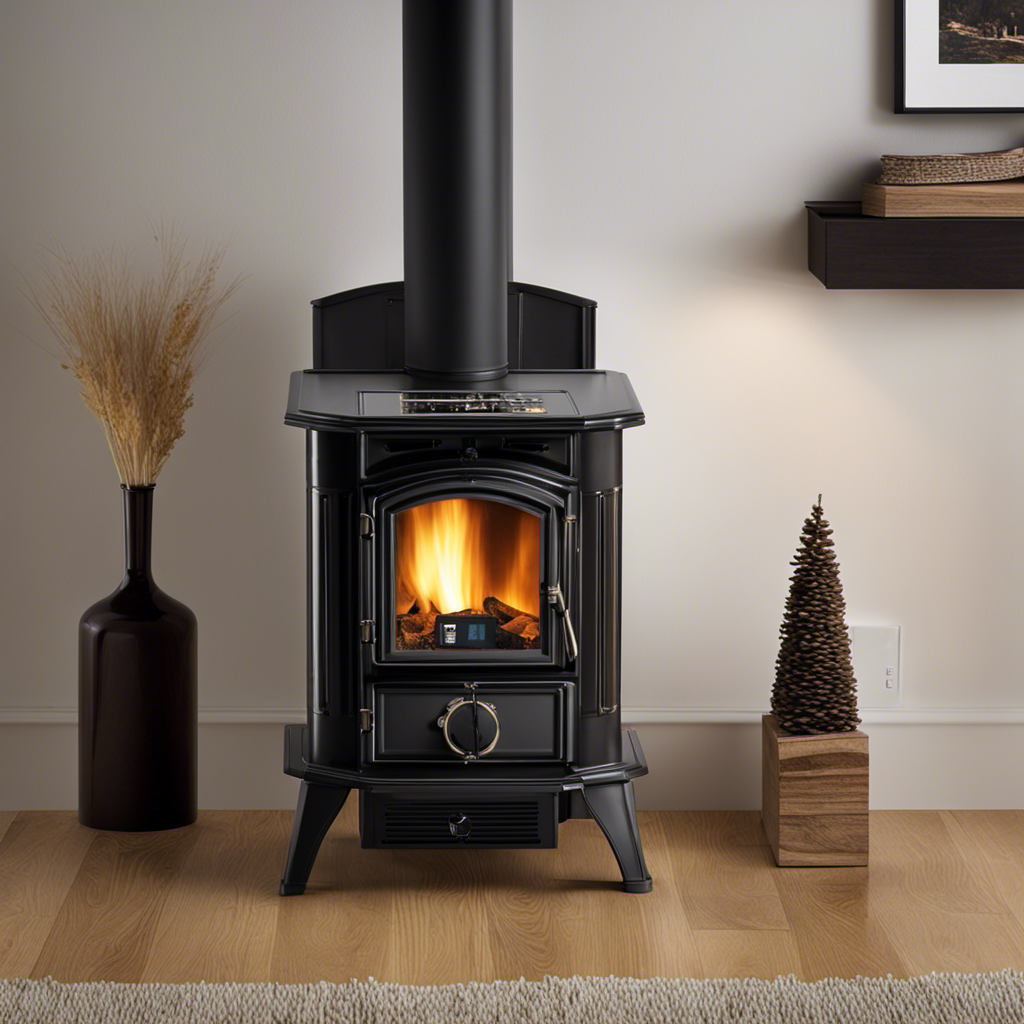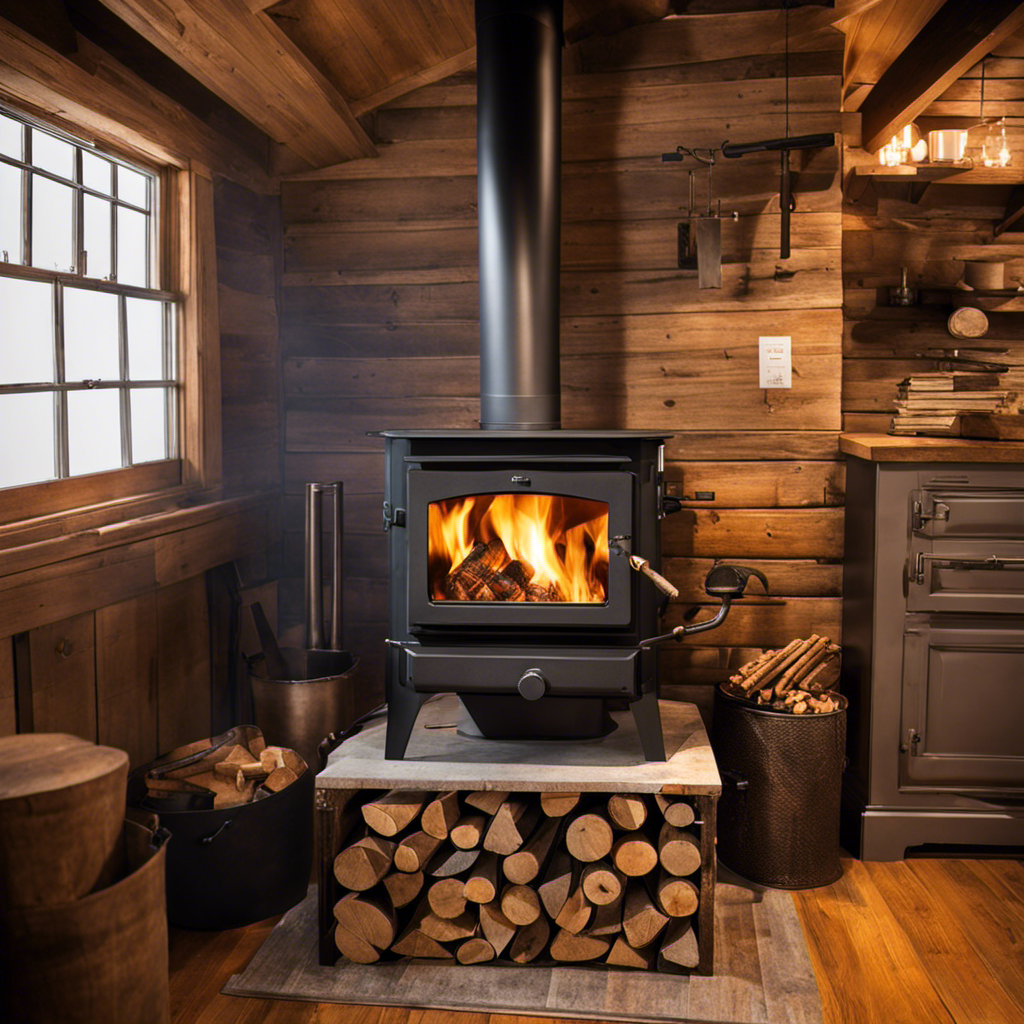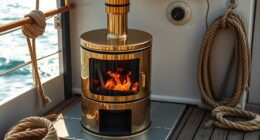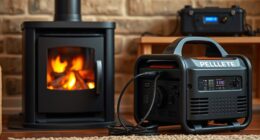As someone engaged in woodworking, I recognize the significance of assessing the moisture level in wood before transforming it into pellets. It’s comparable to establishing a robust base for a structure designed to endure.
In this article, I will guide you through the process of checking the moisture of wood using the right tools and equipment. With step-by-step instructions and tips for maintaining optimal moisture levels, you’ll be able to produce high-quality wood pellets that burn efficiently.
Let’s dive in and explore the world of wood moisture testing.
Key Takeaways
- Checking wood moisture levels is crucial for ensuring the quality and efficiency of wood pellets.
- Visual inspection alone is not accurate for moisture testing, and reliable moisture meters provide precise and reliable readings.
- Proper placement of moisture meter prongs and acclimation time are crucial for obtaining accurate moisture readings.
- Moisture readings impact the drying time and temperature for wood before pelletizing, and adjusting pellet production based on moisture content is essential for optimal results.
The Importance of Checking Wood Moisture Levels
You should always check the moisture levels of the wood before making it into a pellet. Proper wood moisture levels are crucial for ensuring the quality and efficiency of the pellets. When the moisture content is too high, the pellets may not burn properly, resulting in reduced heat output and increased emissions. On the other hand, if the moisture content is too low, the pellets may become brittle and crumble easily.
One common mistake in checking wood moisture is relying solely on visual inspection, which can be inaccurate. Another mistake is not using a reliable moisture meter, which provides precise and reliable readings. By checking the moisture levels of the wood before pelletizing, you can ensure optimal pellet quality and performance.
Now, let’s move on to the tools and equipment needed for moisture testing.
Tools and Equipment Needed for Moisture Testing
The tools and equipment needed for testing the moisture of the wood include a moisture meter and a weighing scale. A moisture meter is a device used to measure the amount of moisture content in wood. It works by sending an electrical current through the wood and measuring the resistance to determine the moisture level.
A weighing scale is used to measure the weight of the wood sample before and after drying, in order to calculate the moisture content accurately.
- Moisture meter: Essential for accurate moisture testing.
- Weighing scale: Helps to determine the wood’s moisture content precisely.
- Calibration kit: Ensures the accuracy of the moisture meter readings.
- Sample container: Holds the wood sample for testing.
- Drying oven: Used to dry the wood sample for weight measurement.
These tools are crucial for conducting moisture testing methods and ensuring the accuracy of the results. With the right equipment, you can proceed to the step-by-step guide to checking wood moisture levels.
Step-by-Step Guide to Checking Wood Moisture
To begin checking the moisture level of your wood, first ensure that you have all the necessary tools and equipment ready. These include a moisture meter, protective gloves, and a clean, dry cloth.
Wood moisture measurement techniques typically involve using a moisture meter with two metal prongs that are inserted into the wood. The meter then provides a reading of the moisture content in percentage.
It is important to note that common mistakes in wood moisture testing include inaccurate readings due to improper placement of the prongs or not allowing enough time for the wood to acclimate to its surroundings. By following the proper techniques and avoiding these mistakes, you can obtain accurate moisture readings for your wood. This is crucial for ensuring the quality of wood pellets produced from the materials.
Moving on to interpreting moisture readings for wood pellet production…
Interpreting Moisture Readings for Wood Pellet Production
Once you have obtained the moisture readings, it’s essential to understand how they impact the production of wood pellets.
Interpreting moisture readings is crucial in ensuring the quality and efficiency of the pellet production process. By using specialized moisture testing equipment, such as moisture meters or moisture analyzers, you can accurately measure the moisture content of the wood.
These readings provide valuable information for determining the appropriate drying time and temperature for the wood before pelletizing. Moisture readings also help in maintaining consistency and preventing issues like mold growth or combustion problems during the pellet production process.
Understanding the moisture content allows you to make necessary adjustments to optimize the pellet production, ensuring that the final product meets the required standards.
Now, let’s delve into some tips for maintaining optimal wood moisture levels.
Tips for Maintaining Optimal Wood Moisture Levels
Ensure you regularly monitor and adjust the drying time and temperature to maintain optimal moisture levels for the wood used in pellet production.
Proper wood moisture testing techniques are crucial to prevent mold growth in wood pellets. One effective technique is the oven-dry method, where a small sample of wood is weighed, placed in an oven, and heated until it reaches a constant weight. The moisture content can then be calculated based on the weight loss.
Another technique is the electrical resistance method, which measures the electrical conductivity of the wood to determine its moisture content.
It is important to note that different wood species have different optimal moisture levels, so it is essential to consider the specific requirements for the type of wood being used.
Frequently Asked Questions
Can Wood Moisture Levels Affect the Quality of Wood Pellets?
Wood moisture levels can greatly affect the quality of wood pellets during the manufacturing process. To ensure optimal pellet production, precise methods for measuring wood moisture levels should be employed.
How Often Should Wood Moisture Levels Be Checked for Wood Pellet Production?
Checking the moisture levels of wood before pellet production is crucial. The frequency of checking depends on several factors, such as climate and storage conditions. Moisture measurement techniques, like using a moisture meter, can ensure accurate results.
Are There Any Risks or Disadvantages Associated With Using Wood With High Moisture Levels for Pellet Production?
Using wood with high moisture levels for pellet production can lead to risks of mold growth and reduced combustion efficiency. It is important to ensure the wood is properly dried before making it into pellets.
Can Wood Moisture Levels Impact the Efficiency and Performance of Wood Pellet Production Equipment?
Wood moisture levels can significantly impact the efficiency and performance of wood pellet production equipment. It is crucial to measure the moisture content accurately before making pellets. Various techniques, such as using a moisture meter, can be employed for this purpose.
Are There Any Specific Moisture Level Ranges That Are Considered Optimal for Wood Pellet Production?
To ensure optimal moisture levels for wood pellet production, factors like humidity and drying time must be considered. It’s crucial to check the moisture of the wood before making it into pellets, as it directly impacts efficiency and performance.
Conclusion
In conclusion, ensuring the wood moisture levels are properly checked before making it into a pellet is crucial for successful wood pellet production. By using the right tools and equipment, following a step-by-step guide, and interpreting moisture readings accurately, you can maintain optimal wood moisture levels.
However, some may argue that moisture testing is time-consuming and tedious. While it does require attention to detail, the benefits of producing high-quality wood pellets far outweigh the effort involved in moisture testing.
By investing time in this crucial step, you can guarantee the best results in your wood pellet production process.
Logan’s affair with adventure began in childhood. He hailed from a small town where vast forests bordered one side and endless shores stretched on the other. His days were spent exploring uncharted woods, climbing tall trees, or listening to the tales of old sailors. This early immersion in a world brimming with stories and mysteries became the foundation of his passion for writing.

